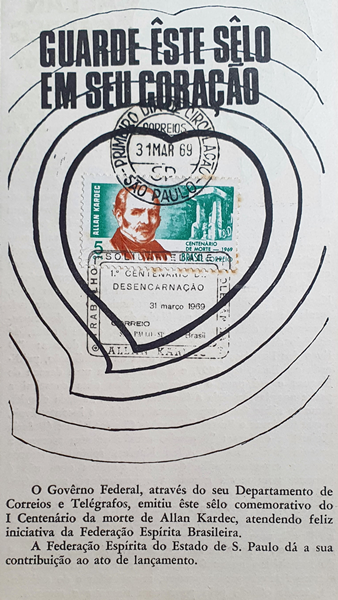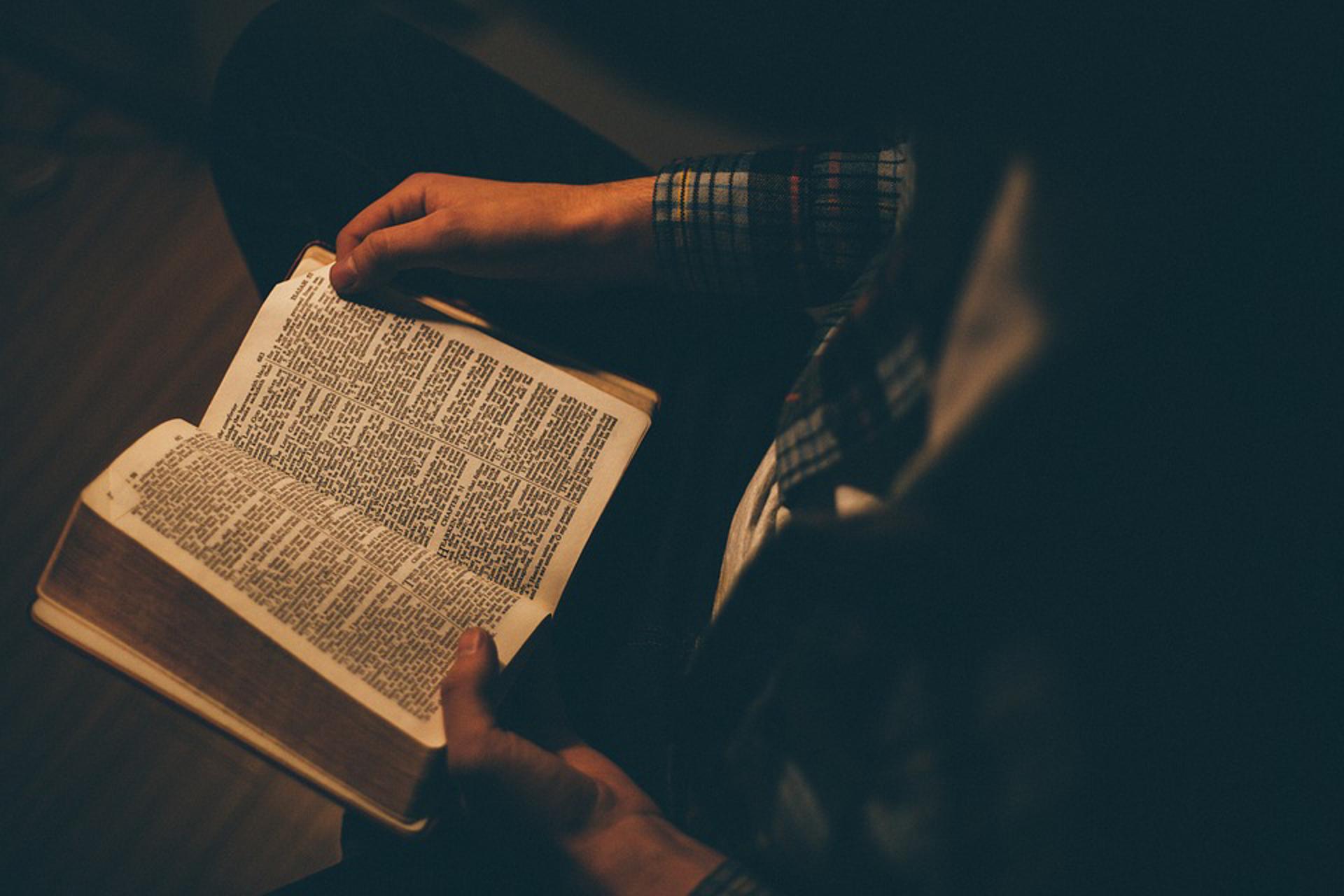The pedagogical structure of " The Spirit´s Book "
The main aim of this work is to provide resources for a correct analysis of the "Tableaux de Mattiers" or the index of "The Spirits Book" (SB), unveiling the logic hidden in the order and methodical distribution of subjects of Kardec book.
We will present our analysis of the SB in two steps. In the first step we will give a general view of the work structure, taking into account its four parts (or books). We will present an argumentation that justifies its division into four parts. In fact, such division gives rise to the Spiritist five books. The four remaining works resulted as developments of each of the four separate parts of the SB.
In a second step, we will discuss each of the four parts, showing a way to visualize the structure implicit in each of them. Starting from this structure one can justify the order imposed by Kardec for the remaining chapters of the SB. Take, for instance, the second part "The spirit world or the world of spirits". How can we understand the order of its eleven chapters ?
We do not aim to convey the idea - in fact, we can not aim it at all - that the structure of the SB was the one originally thought by Kardec. We only intend to unfold a few concepts formulated in the spiritist codification in the hope of contributing to the study of the logic structure tacit in this monumental work.
It is worth to remember Kardec´s statement:
"If a man judges his reasoning infallible, he is well close to error. " [3]
1st Step: The General Structure of the SB.
"In its route of elaboration, spiritism uses the same methods of the positive sciences, applying empirical methods. New facts are presented, which can not be explained by known laws; it watches, compares and analyzes them and, going from effects to causes, it comes to their governing laws to deduce their consequences and looks for useful applications."[4]
We do not want to discuss here the scientific method used by Allan Kardec. "A excelência metodológica do Espiritismo" [5]- the thesis on the perfect adjustment of spiritism to modern criteria characterizing a scientific undertaking was carefully explored by S Chibeni in several articles published in "Reformador".
The four phases highlighted in the quoted passage and used along the way of spiritism elaboration can be applied to extract the pedagogical form of presentation of a scientific doctrine.
From now on, it should be clear that we are not proposing a scientific method of elaboration for spiritism. We are only suggesting a frame, pedagogically fitted to the presentation (or exposition) of the spiritist doctrine.
In fact the first phase, new facts, suggests that one must initially choose or define an object of study. We find the universe or domain subjected to examination. The science field of actuation is traced.
In the second phase, observation,comparison and analysis, a detail analysis of the domain or universe is proposed starting from the previous choice. In this examination, every fundamental concept is explicited for the sake of formulating the laws.
The third phase, formulation of laws, suggests that the regulating laws of the universe should be formulated by taking into account the analysis of the second phase. It is worth to emphasize that all the concepts required to a better understanding of the laws were already presented in the second phase.
The fourth phase, deduction of consequences and search for applications, indicates what can be obtained from the application of the laws ruling the domain elements.
Now we can make up the following image of the pedagogical structure of the SB:
| The 1st phase (choice of objects of study) corresponds to the first part "On the primary causes". God and the two general elements of the Universe, matter and spirit, forming the universal trinity. We remark about God: "God exists, that is essential point and you should not doubt it. Believe in me, do not go beyond it. Do not loose yourselves in a maze from which you could not escape. In the end of this exploration you would not be better persons, but you would just feed your pride, because you would be lead to believe that you know something when in fact you would know nothing." (SB, question 14). For this reason God can not be the object of study of spiritism [6]. On the other hand, matter is the subject of ordinary science. Therefore, the second element, the spirit, becomes the aim of study of spiritism, from the moral point of view: "Just like science studies the material principle, the special object of spiritism is the knowledge of the laws regulating the spiritual element." ("The Genesis", chapter I, item 16). Being defined the object, it rests to analyze it in detail. This is done in the second part. The 2nd phase (detailed domain analysis) corresponds to the second part "The spirit world". The fundamental concepts on regard to the intelligent principle - the spirit - are scrutinized: the origin and nature of spirits, their form and ubiquity, the perispirit, different orders of spirits, evolution of spirits, incarnation and reincarnation of spirits, the spirit life, emancipation of the soul, intervention of spirits in the material world etc. The 3rd phase (formulation of laws) corresponds to the third part "Moral laws". "What is the scope of divine laws ? Do they concern everything or just moral procedures ? " Every law of Nature is divine, because God is the sole author of them. The wise studies the laws of matter while the good person studies and practices the laws of the soul." (SB, question 617) Moral laws regulate the behavior of spirits. Physical laws regulate the material world. Through mediumship, one can observe the action of moral laws in the life of a spirit. In a physics laboratory we can test the laws of physics. In both cases, experiments (with a medium or in a laboratory) enable us to state that the proposed laws are not mere philosophical speculations. The consequences for the spirit of the total or partial fulfillment of the moral laws are analyzed in the 4th part. The 4th part (deduction of consequences) corresponds to the fourth part "hopes and solaces". From the partial or complete fulfillment of the laws there follows the earthly joys or sorrows. "Every action of us is subjected to God´s laws. No matter how meaningless they may seem, none of them can be violated. If we suffer the consequences of their violation, we should blame ourselves only who have become the perpetrators of our future or present unhappiness" (SB, question 964) |
Each part of the SB gave rise to the other fundamental works:
1st part: "Primary causes" - The genesis, the miracles and predictions according to spiritism. (1868);
2nd part: "The spirit world" - The book on mediums (1861);
3rd part: "Moral laws" - The gospel according to spiritism (1865);
4th part: "Hopes and solaces" - Heaven and Hell or the divine justice according to spiritism (1865)
2 STEP The pedagogical structure of each part of the SB.
2.1 The structure of the first part ,"Primary Causes".
God, "the primary cause of all things", gave birth to the two universal elements: spirit ("the intelligent principle of universe") and matter ("intermediary agent, upon which the spirit acts"). Creation is the result of the spirit action upon matter, according to the divine law. The creation of living beings is the result of "the action of an agent (the vital principle) upon matter". "Such agent, without matter, is not life in the same way as matter can not live without the agent." (SB questions, 1, 22, 23 and 63). See Fig. 1.
2.2 The structure of the second part, "The Spirit World".
The spirits compose the "spirit world or the world of the incorporeal intelligence". The corporeal world and the spirit world are "independent from each other, however, their relation is continuous because one acts upon the other continuously" (SB, question 86). As the spirit is the intelligent element common to both worlds, material and spiritual, it can be found in 6 different states:
1 - In transit from the spirit world to the material one, that is, in process of incarnation;
2- In transit from the material to the spirit world, that is, in process of discarnation;
3 - Living in the material world as an incarnate spirit (or soul);
4 - Being in the spirit world and interfering in the material world;
5 - Being in the material world and, at the same time, acting on the spirit world.
(see Fig. 2)
The spirit is the intelligent element that acts on the two sides of life (corporeal and spiritual), therefore, it should be studied first. The first chapter is entitled "Spirits".
The 1st state described above is studied in the second chapter "The incarnation of spirits".
The 2nd state is analyzed in the third chapter "Return of the spirit to the spiritual life upon the ending of the corporeal life".
These two processes, incarnation and discarnation give rise to the several lives of spirits. Next these lives are analyzed in the fourth chapter "The plurality of existences". Since the plurality of lives is one of the most basic principles of the spiritist codification, it is important to find a safe ground for its fundamentals, which is done in chapter 5 "Remarks on the plurality of lives".
The 3rd state, the spirit life in the spirit world, is studied in chapter 6, "The spirit life".
The 4th state, the spirit life in the corporeal world, is studied in chapter 7 "Return of the spirit to the corporeal life".
The 5th state, living in a body and acting on the spirit world, is the theme of study of chapter 8, "Emancipation of the soul".
The 6th state, living in the spirit world and acting on the material world, constitutes the subject of chapter 9 "Intervention of spirits in the material world".
These six possible states - incarnate, discarnate, to live in the material world, to live in the spiritual world, to have a body and, at the same time, actuates on the spirit world, to live in the spirit world and, at the same time, actuates in the material world, give rise to the missions and occupation of spirits presented in chapter 10 "Occupations and missions of spirits".
The continuos action of the intelligent principle on both sides of life, earthly and spiritual, demonstrates that "everything in Nature is connected by links that we cannot understand yet". "If one observes the plurality of beings, we conclude that they form an endless chain, from brute matter to the most intelligent man".(SB, questions 604 and "Introduction" item 17, respectively)
In order to show that this chain - as a result of a reciprocal action of both worlds, (or of the two principles, spirit and matter), goes beyond the limits of human beings in matter, Kardec presents the 11th and last chapter of the second part: "The three reigns".
"Have we already said that everything in Nature is connected and evolves to unity? In these beings, whose totality you are far from understand, the intelligent being is elaborated, becomes an individuality through little steps and prepares itself to life, as we have just exposed. It is a kind of a preliminary work, a germination, through which the intelligent principle transforms itself and becomes a spirit". (SB, question 607)
2.3 The structure of the third part, "Moral Laws"
In this part, the following questions are addressed:
a) What are moral laws?
b) What are the moral laws?
c) How does one fulfill the moral laws?
In chapter 1, "The divine or natural law", the first question above is answered: "Among the divine laws, some regulate the movement and relation of brute matter: the physical laws whose scope is studied by science. Others concern man as a being in himself and as his relation with God and his fellow beings." They are the rules of life´s body as well as the soul´s life: these are the moral laws. (SB, question 617).
The answer to the second question "What are the moral laws ?" is found from chapter 2 to 11. The pedagogical form in which the moral laws were proposed is found in the highlighted passage above: moral laws are responsible for the people´s duties toward God, themselves and their neighbors. See Fig. 3 for a sketch of this relationship.
The duties of man in his relation to God are contained in the first two laws: Adoration (chapter 2) and Work (chapter 3). Through adoration, "the elevation of thought to God", and work ("every useful occupation") man approaches God. In a certain sense, work originates from adoration, since "God, model of love and compassion, is active ever." (SB, questions 649, 675 and 21, respectively).
The duties of man toward himself are described in the following three laws: Reproduction, Conservation and Destruction (Chapter 4, 5, and 6, respectively).
Reproduction is responsible for the origin of life on Earth. This should be the first duty of man toward himself (or his species): to guarantee the existence of the body´s life. Then, he should keep his life through conservation. Conservation is followed by destruction "since the nourishment of the living beings depends on the destruction of others (...)". (SB, question 728 a)
The duties of man toward his fellow beings are described in the laws: Society (chapter 7), Progress (chapter 8), Equality (chapter 9) and Liberty (chapter 10).
From social life (only where fraternity is possible) there comes progress whose aim is equality and liberty. "From the point of view of its importance to social happiness, fraternity comes first: it is the base. Without it, there would be no equality, nor serious freedom. Equality comes from fraternity and liberty is the result of both".[7]
The nine moral laws enumerated by Kardec - Adoration, Work, Reproduction, Conservation, Destruction, Society, Progress, Equality and Liberty - sum up all the duties of man toward God, himself and his neighbors. The tenth and last moral law "The law of justice, love and compassion (charity)", chapter 11, contains all the other ones. God (Justice), for the sake of love, created man to live in good relation with his neighbors by the practice of charity (or compassion).
"The division of God´s laws in ten parts corresponds to that of Moses and essentially encompasses every little fact of life. The division is not absolute as any other classification system and one can adopt it surely. All these systems depend on the considered view point. The last law is the most important one, since it enables man to evolve faster in the spirit life, summarizing all the others." (SB, question 648).
The answer to the third question "How does one fulfill the moral laws ?" is given in the last chapter (12): "Moral perfection". In this chapter, we find one of the most beautiful studies about human personality. After a careful scrutiny of man (his virtues, vices, passions, selfishness and the character of a good person), the chapter presents the knowledge of oneself as a "key to individual improvement". "Examine your acts contrary to God, contrary to your fellow beings and against yourselves. The answers will set your consciousness free or indicate the existence of evil ready to be eliminated."(SB, questions 919 and 919a).
2.4 The structure of the fourth part "Hopes and Solaces"
Since the spirits act on both sides of life, the material and spiritual worlds, the consequences of the effective or defective fulfillment of the moral laws takes place in these two worlds. In chapter 1, "Earthly trials and joys", the consequences for the spirit in the material world are presented.
In the second chapter, "Future trials and joys", the consequences for the spirit in the spirit world are presented. See Fig. 4 for an image.
References
[1] Allan Kardec, Prologue "The Spirit´s Book" . Original title: "Le Livre des Esprits".
[2] According to the address by Camille Flammarion at Kardec´s grave. In A Kardec, "Posthumous Works". Original title: "Oeuvres Posthumes".
[3] Allan Kardec, Introduction to the study of the spiritist doctrine. "The Spirit´s Book."
[4] Allan Kardec, Character of the spiritist revelation. "The Genesis, the miracles and predictions according to spiritism". Original title: "La Genèse, les Miracles et les Prédictions selon le Spiritisme".
[5] Silvio S Chibeni, A Excelência Metodológica do Espiritismo, Reformador , November 1988, p. 328 and December 1988, pg. 373.
[6] "Can man understand the essential nature of God? No, human beings lacks a sense for that. (SB, question 10). "Man cannot search the essential nature of God. To understand him, a special sense lacks, which is only given after complete spirit purification.(Genesis, chap. II, 11th item)".
[7] Allan Kardec, Liberty, equality and fraternity, 3rd paragraph, "The Posthumous Works".
Cosme D B Massi
Translation and figures by A L Xavier Jr
(Text originally written in Portuguese and published in "Reformador", July 1997, pp. 208 - 211)
Source: The Spiritist Messenger, 8th Year, Number 36, May 2002








